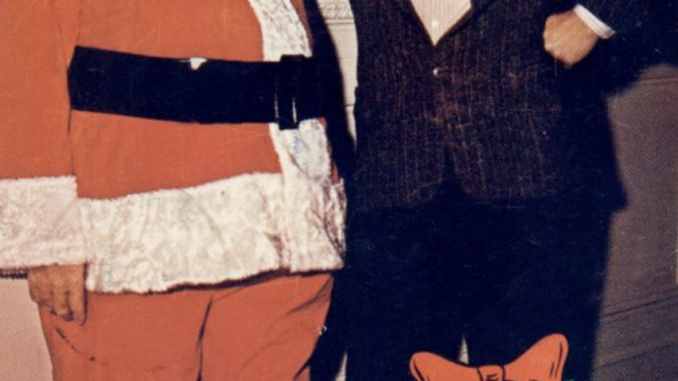
Each year, the weather gets colder, afternoons get darker and celebrities — both old and new — can be heard from our speakers singing about snowfall, Santa and spreading holiday cheer. Once November hits, everyone should expect to hear lots about doing the jingle bell rock or chestnuts roasting on an open fire. Whether you’re perusing the aisles of a drug store or putting an ornament on a tree, you can’t escape those familiar holiday tunes. The commercialism of Christmas comes in many forms, including music. Christmas music is an oversaturated market filled with musicians hoping to cash in on some holiday cheer each year.
Artists and their teams know that there will always be a demand for Christmas music, which is why so many Christmas songs exist. Writer Phil Barry found in 2019 there were almost 10,000 songs written about Christmas, a number that is sure to have increased in recent years. Some may be genuine Christmas fanatics, but the lucrativeness of a successful holiday hit is not lost on musicians. Many modern artists cover Christmas classics that have lapsed copyright composition rights. This means they are owned by the public and the performer singing it will receive all the revenue, rather than the performer and copyright holder.
While modern artists hope to end up on the coveted list of Christmas classics adored by the public, few have been able to sing their way to eternal holiday relevance. In recent years, artists like Katy Perry, John Legend and Miley Cyrus released Christmas albums but failed to find success in making memorable songs that broke into the holiday canon. Xavier “X” Jernigan, Spotify’s head of cultural partnerships, told Rolling Stone in 2018, “If you create a Christmas classic and people love it, you will always be relevant.”
This has proven to be true for R&B legend Mariah Carey, who in 2017 was dubbed the “Queen of Christmas” for her indomitable song “All I Want for Christmas Is You.” This iconic single rings in the Christmas season each year and has set a new standard for modern Christmas music with Carey’s robust vocals and boisterous production landing her a number one spot on Billboard’s Hot 100 in 2019, 25 years after its original release. Carey accomplished the rare feat of creating a new (and copyrighted) holiday classic that has been and will continue to be covered by artists for years to come, meaning she’ll be raking in lots of cash for the foreseeable future.
As genres expand and structures in music become less rigid, Christmas music becomes more unique and experimental. A newer genre is what Spotify calls “Christmas Pop,” which is Christmas music with catchy beats that is more likely to be aimed at young people. Here, you won’t hear Dean Martin’s velvet croons singing “let it snow, let it snow, let it snow!” but rather popular modern artists like Ariana Grande sing her Christmas hit “Santa Tell Me.” This song has become a classic for millennials and Gen Z and has charted in multiple countries each year since Grande released it in 2014. Another popular artist that released a beloved Christmas album for young people is Justin Bieber, who came out with “Under the Mistletoe” when he was 17 and featured standout original tracks like “Mistletoe” and “Drummer Boy.” The album set multiple records for Bieber — debuting at number one on the US Billboard 200 chart, making Bieber the first male artist to have a Christmas album debut at number one and made him the fourth artist to chart on Billboard 200 under the age of 18 twice. Both artists released Christmas albums mixed with old and original Christmas songs and each were praised by critics for their original tracks.
An example of an artist that took a less conventional approach to Christmas music is Sufjan Stevens, who has two Christmas albums that don’t feel like a commercial project. His 2006 box set album “Songs for Christmas” is an over two-hour culmination of Christmas songs he released from 2001-2006. It opens with a folksy rendition of “Amazing Grace,” as an acoustic guitar twang is heard over Stevens’ take on the song that was first published over 200 years ago. Instead of going the overdone route of covering classic Christmas music, Stevens’ original Christmas songs separate him from the brand of artists whose holiday albums lack creativity with only covers and come across as existing for a quick buck.
His songs are wistful and evocative of Christmas time — the good and the bad. On the fun “Come On! Let’s Boogey to the Elf Dance,” he sings along with a cheerful flurry of sleighbells and flute notes: “Twenty-one elves! They are all singing! / K-Mart is closed! So is the bakery! / Everyone’s home watching TV!” The song “This Was the Worst Christmas Ever,” is melancholy and filled with bittersweet holiday blues which can be hard to avoid during the Christmas season, that can be a fraught time for many due to reasons like loneliness and money problems. He sings: “Our father yells / Throwing the gifts in the wood stove, wood stove / My sister runs away / Taking her books to the schoolyard, schoolyard.” Stevens shows listeners that Christmas music doesn’t have to be filled with artificial cheer, but can tackle palpable struggles the holidays bring.
The public loves Christmas music, and as long as they do expect to hear choruses about eggnog and a winter wonderland each November and December. Most material will be forgotten, but some will find a special place in our lives and remind us of each Christmas season. Don’t try to escape the Christmas songs you’ve heard your whole life. The only way to do so is by stuffing your ears like stockings all holiday season, and even that might not do the trick.

